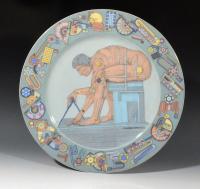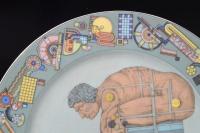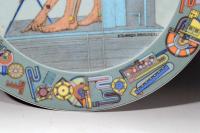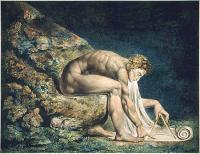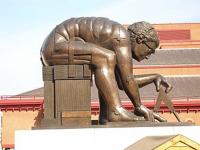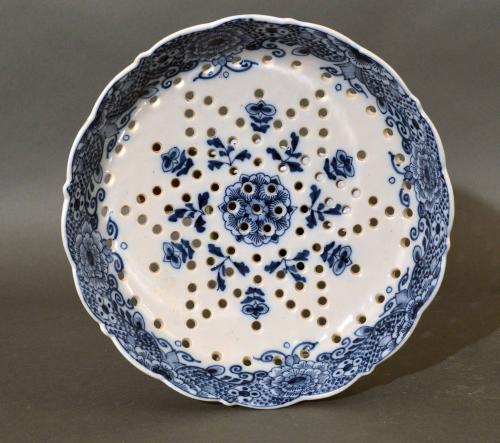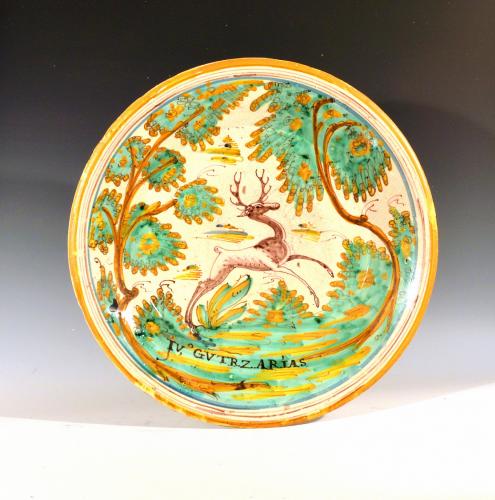
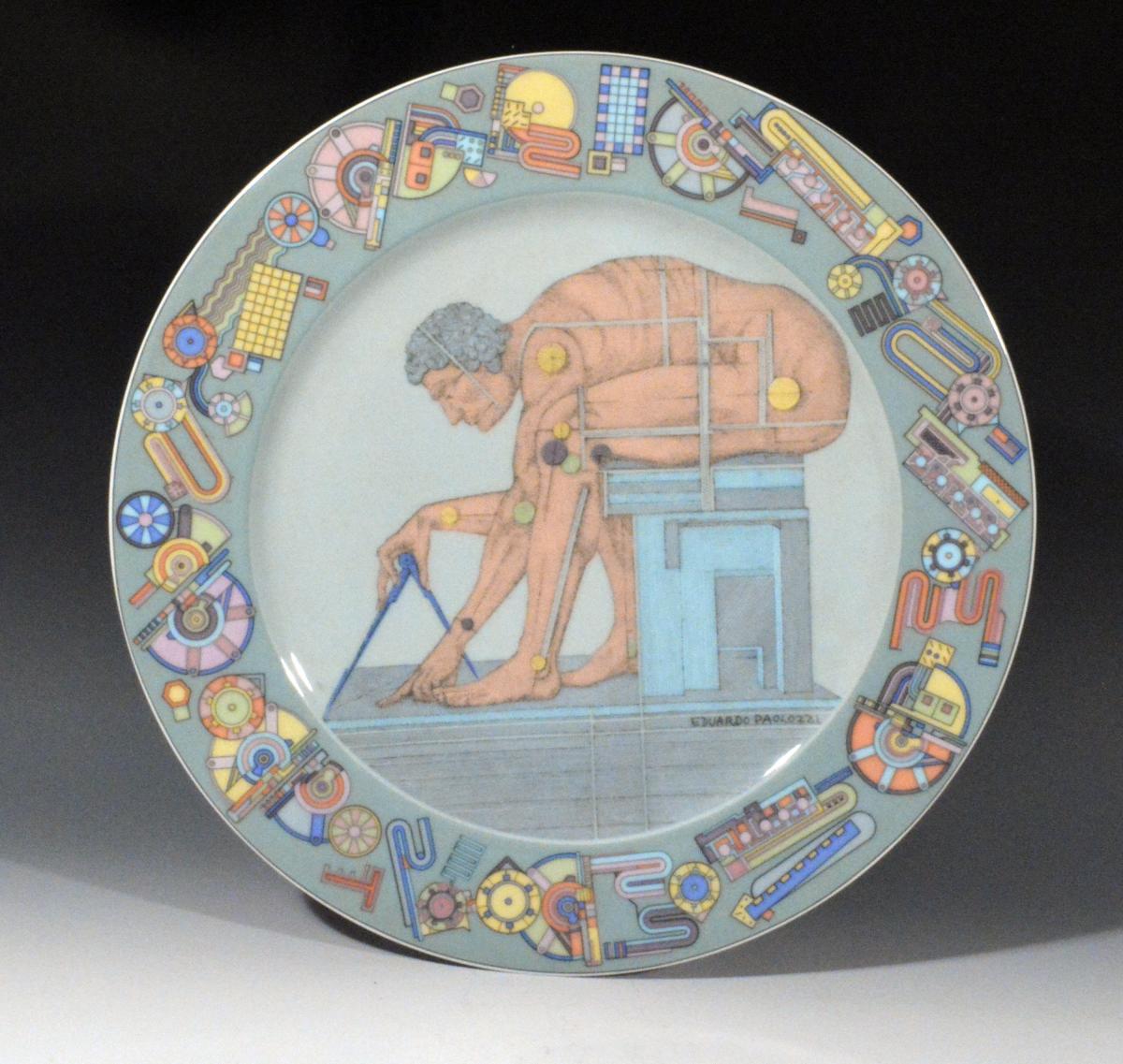
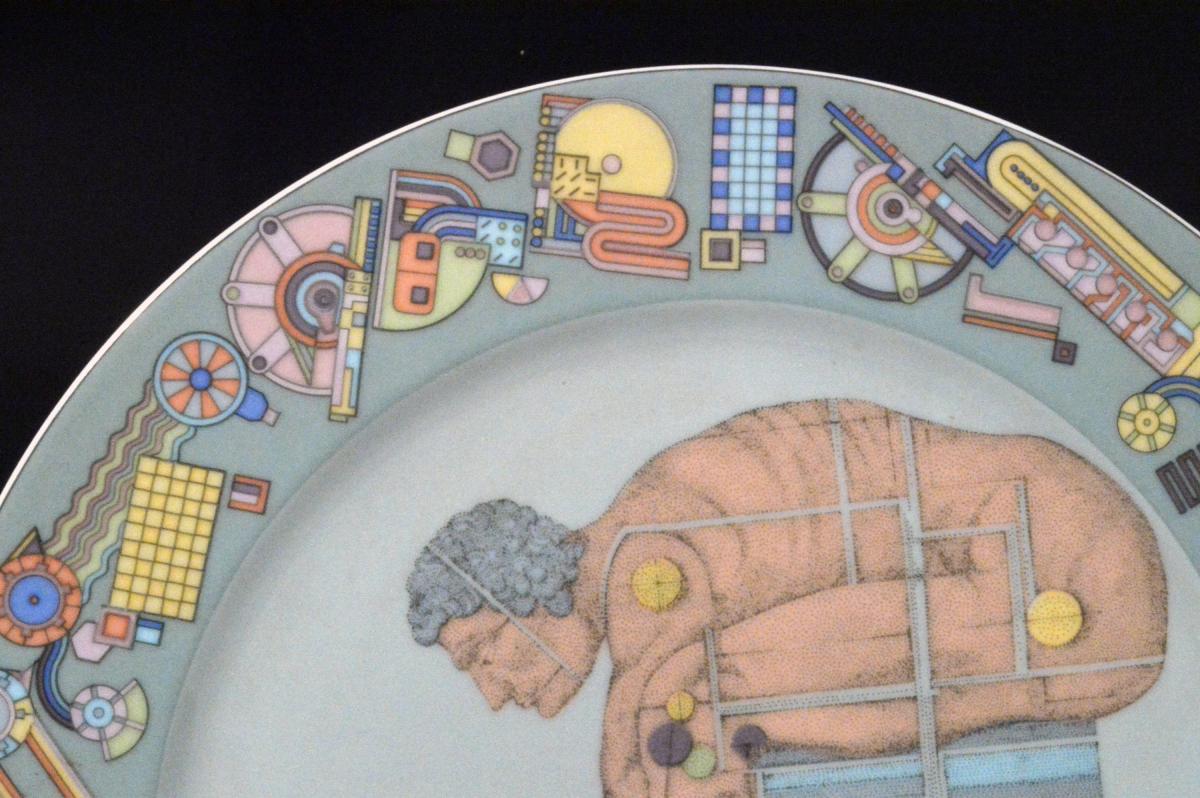
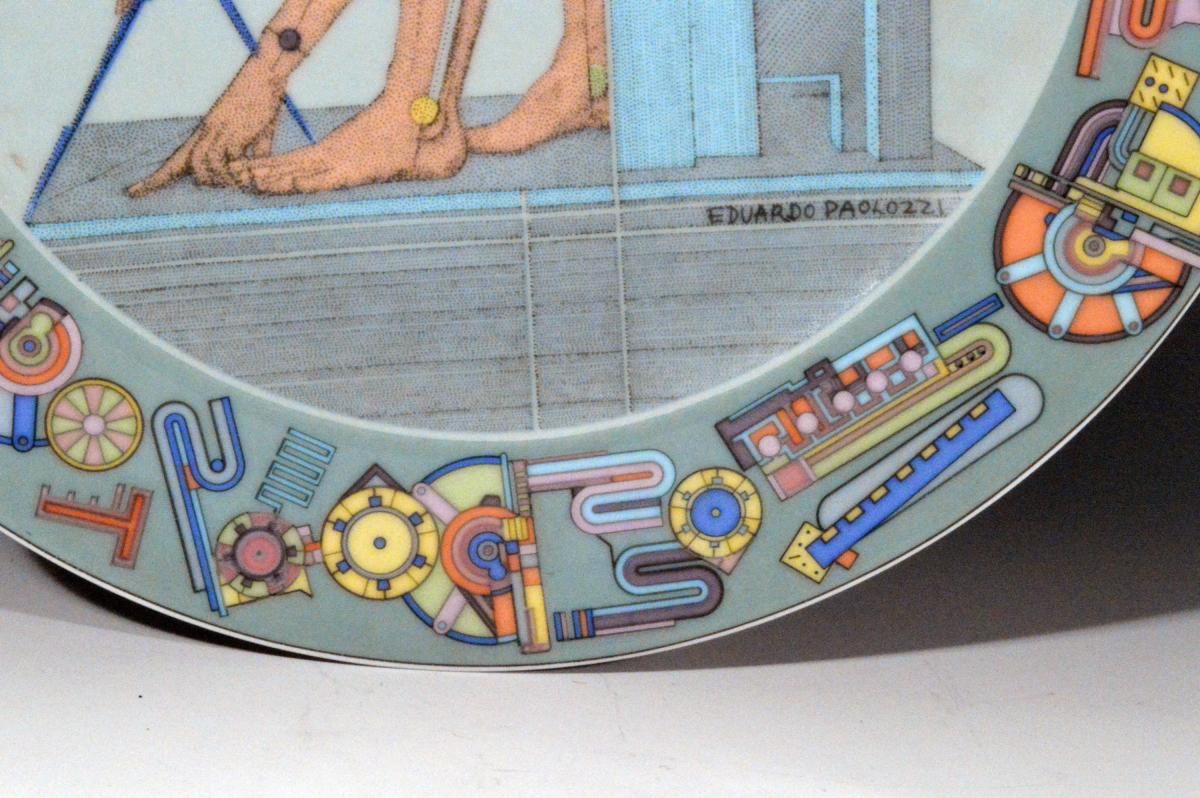
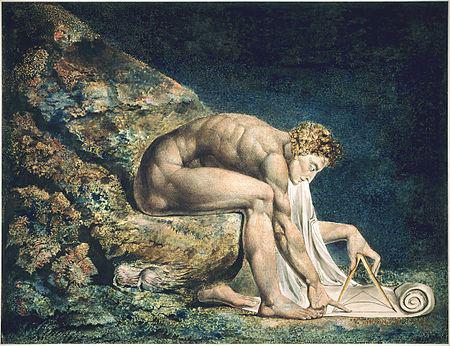
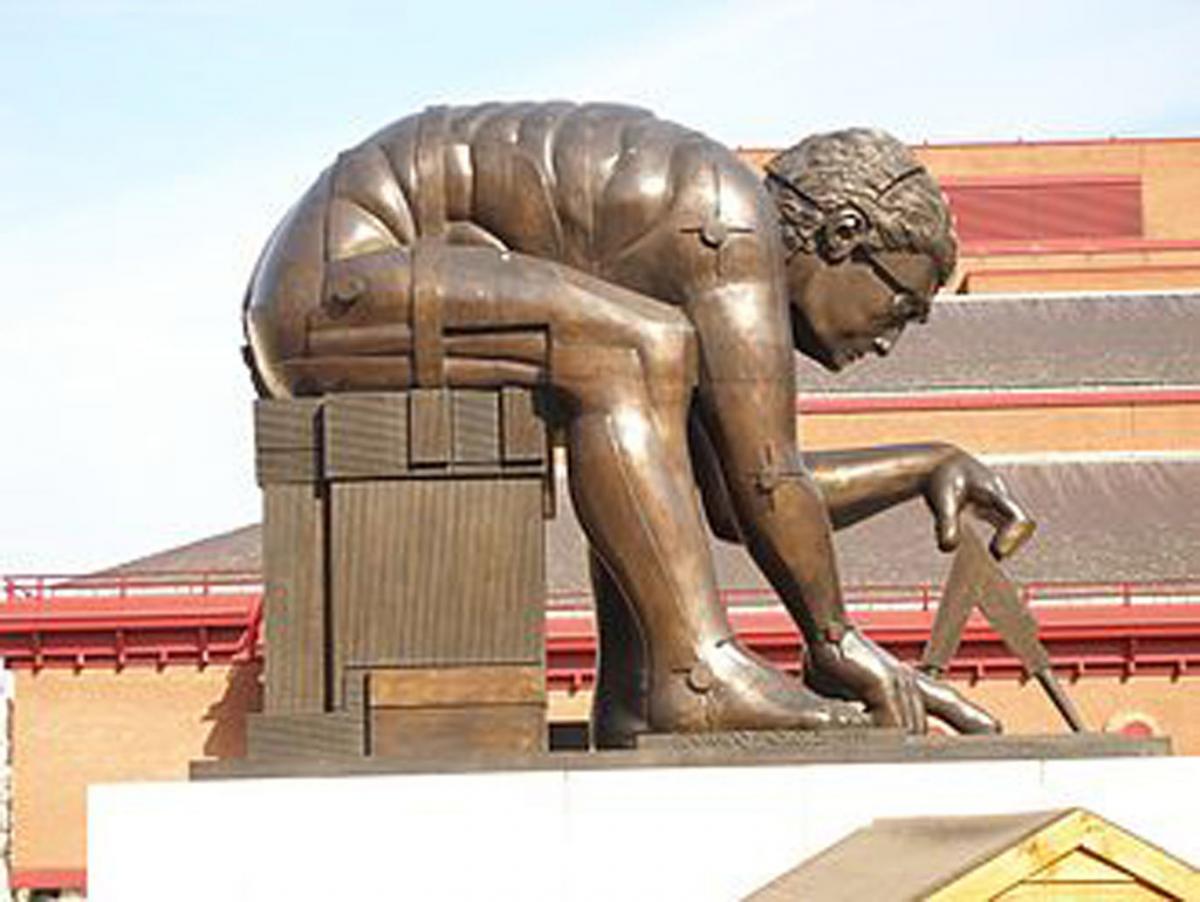
Price
£575.00This object is eligible for a Certificate of BADA Provenance
The BADA Standard
- Since 1918, BADA has been the leading association for the antiques and fine art trade
- Members are elected for their knowledge, integrity and quality of stock
- Our clients are protected by BADA’s code of conduct
- Our dealers’ membership is reviewed and renewed annually
- Bada.org is a non-profit site: clients deal directly with members and they pay no hidden fees
To be exhibited at
BADA Gift List - Under £1000Large Porcelain Plate-"After Newton"
by Eduardo Paolozzi,
Rosenthal,
Circa 1980.
Dimensions: 12 inches x 1 inch high.
The large plate depicts "After Newton", an image of the large sculpture by Paolozzi. Paolozzi follows William Blake's 1795 print Newton in illustrating how Isaac Newton's equations changed our view of the world to being one determined by mathematical laws. The rim depicts a series of futuristic designs.
The Tate writes-
The eighteenth-century poet, Alexander Pope, wrote a satirical epitaph for Newton: 'Nature and Nature's laws lay hid in night/God said Let Newton be! And all was light'. This shows just how much the eighteenth century revered the great philosopher. Newton had successfully explained the workings of the physical universe.
To Blake, however, this was not enough: Newton had omitted God, as well as all those significant emotional and spiritual elements which cannot be quantified, from his theories. Blake boasted that he had 'fourfold vision' while Newton with his 'single vision' was as good as asleep. To Blake, Newton, Bacon, and Locke with their emphasis on reason were nothing more than 'the three great teachers of atheism, or Satan's Doctrine'.
In this print from 1795 Newton is portrayed drawing with a pair of compasses. Compasses were a traditional symbol of God, 'architect of the universe', but notice how the picture progresses from exuberance and colour on the left, to sterility and blackness on the right. In Blake's view Newton brings not light, but night.
Paolozzi is recognized for producing largely lifelike statuary works, but with rectilinear (often cubic) elements added or removed, or the human form deconstructed in a cubist manner.
Reference:
https://en.wikipedia.org/wiki/Newton_(Blake)
Newton is a monotype by the English poet, painter and printmaker William Blake first completed in 1795, but reworked and reprinted in 1805. It is one of the 12 "Large Colour Prints" or "Large Colour Printed Drawings" created between 1795 and 1805, which also include his series of images on the biblical ruler Nebuchadnezzar.
Isaac Newton is shown sitting naked and crouched on a rocky outcropping covered with algae, apparently at the bottom of the sea. His attention is focused upon diagrams he draws with a compass upon a scroll that appears to unravel from his mouth. The compass is a smaller version of that held by Urizen in Blake's The Ancient of Days.
Blake's opposition to the Enlightenment was deeply rooted. He wrote in his annotations to the Laocoon "Art is the Tree of Life. Science is the Tree of Death."
Newton's theory of optics was especially offensive to Blake, who made a clear distinction between the vision of the "vegetative eye" and spiritual vision. The deistic view of God as a distant creator who played no role in daily affairs was anathema to Blake, who regularly experienced spiritual visions. He opposes his "four-fold vision" to the "single vision" of Newton, whose "natural religion" of scientific materialism he characterized as sterile.
Newton was incorporated into Blake's infernal trinity along with the philosophers Francis Bacon and John Locke.
The Rosenthal Studio-line started as a new design brand in 1961. Up to present day, artists and designers such as Wilhelm Wagenfeld, Raymond Loewy, Walter Gropius, Tapio Wirkkala, Björn Wiinblad, Mario Bellini, Jasper Morrison, Konstantin Grcic and Patricia Urquiola have been designing unique, innovative and avant-garde collections for Rosenthal.
Paolozzi was appointed CBE in 1968 and in 1979 he was elected to the Royal Academy. During the late 1960s, he started contributing to literary magazine Ambit, which began a lifelong collaboration.
He was promoted to the office of Her Majesty's Sculptor in Ordinary for Scotland in 1986, which he held until his death. Paolozzi was knighted by Queen Elizabeth II in 1989.
In 1994, Paolozzi gave the Scottish National Gallery of Modern Art a large body of his works and much of the content of his studio.
In 1999 the National Galleries of Scotland opened the Dean Gallery to display this collection, and the gallery displays a recreation of Paolozzi's studio, with its contents evoking the original London and Munich locations.
Dimensions
30.48 cm x 2.54 cm highCondition report
ExcellentThe BADA Standard
- Since 1918, BADA has been the leading association for the antiques and fine art trade
- Members are elected for their knowledge, integrity and quality of stock
- Our clients are protected by BADA’s code of conduct
- Our dealers’ membership is reviewed and renewed annually
- Bada.org is a non-profit site: clients deal directly with members and they pay no hidden fees


